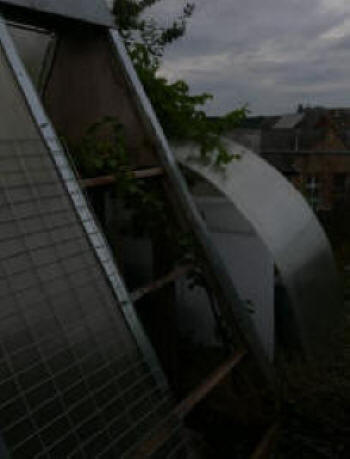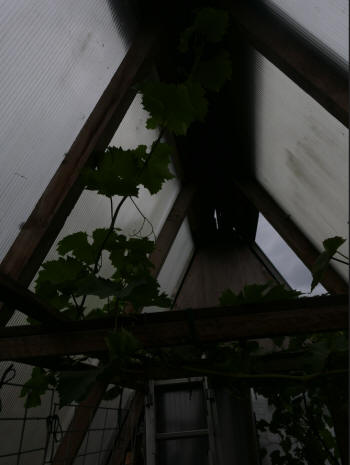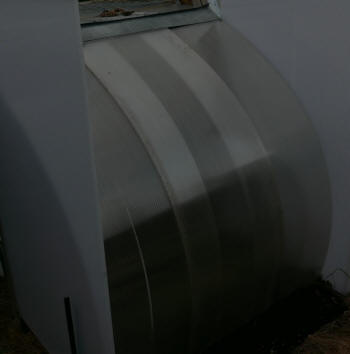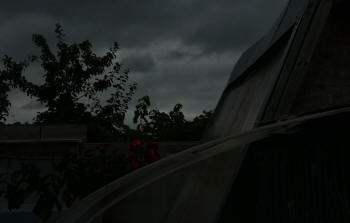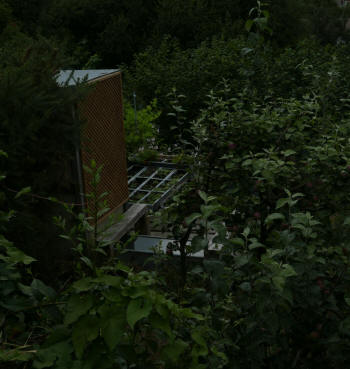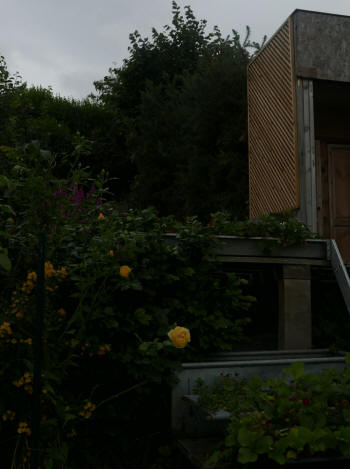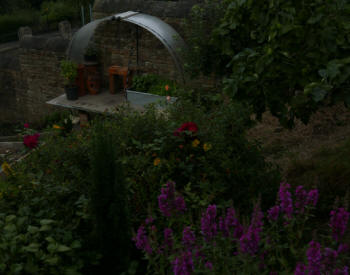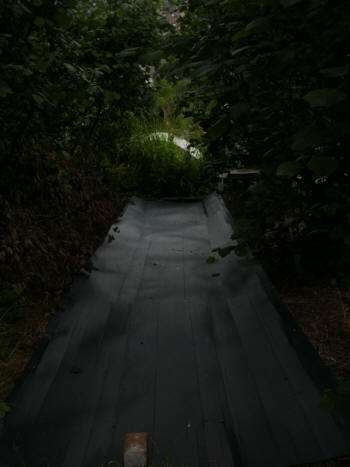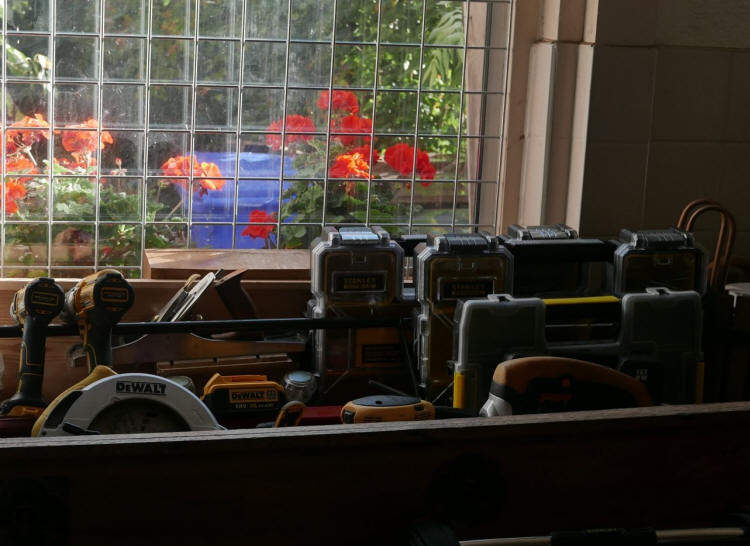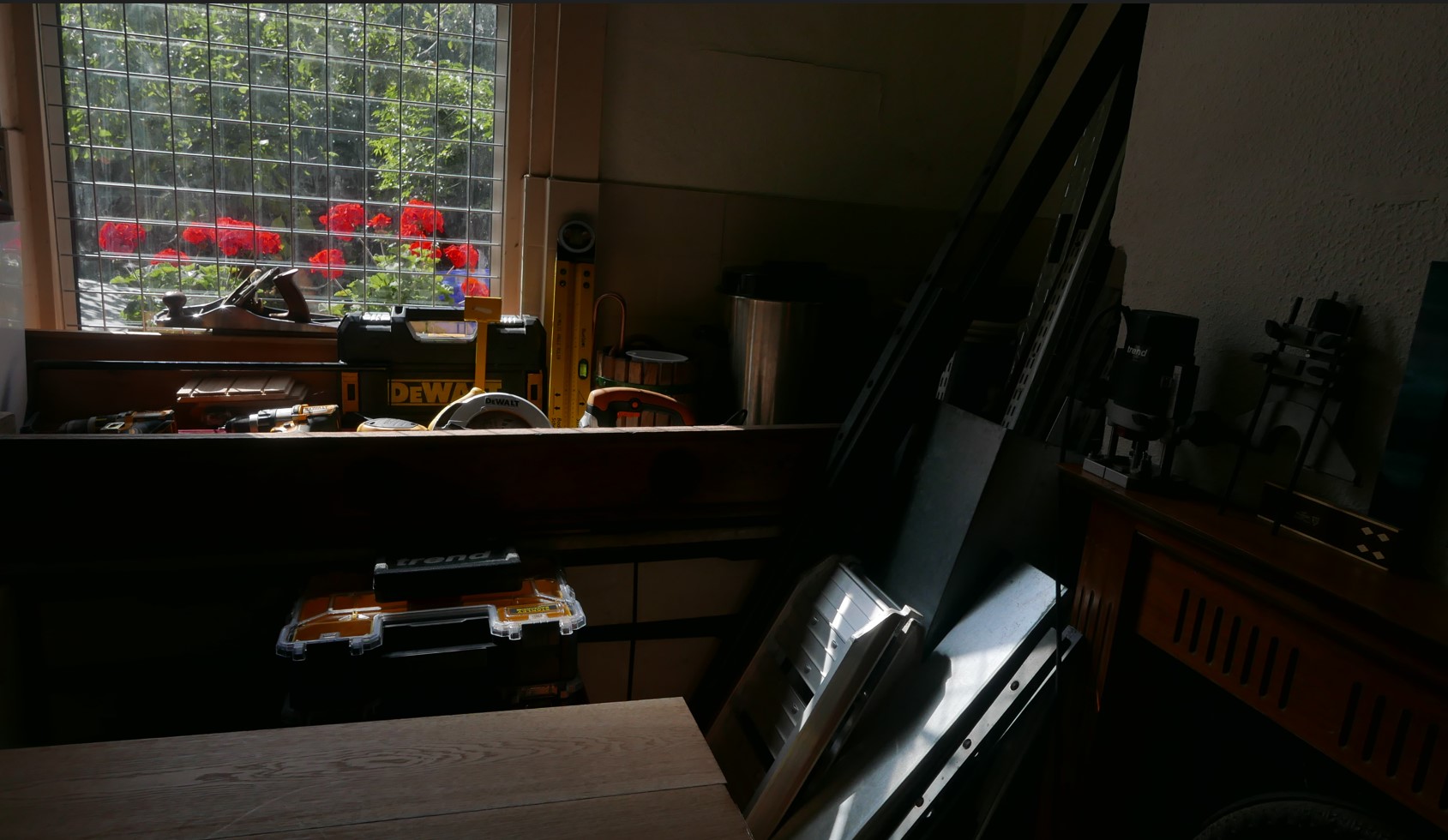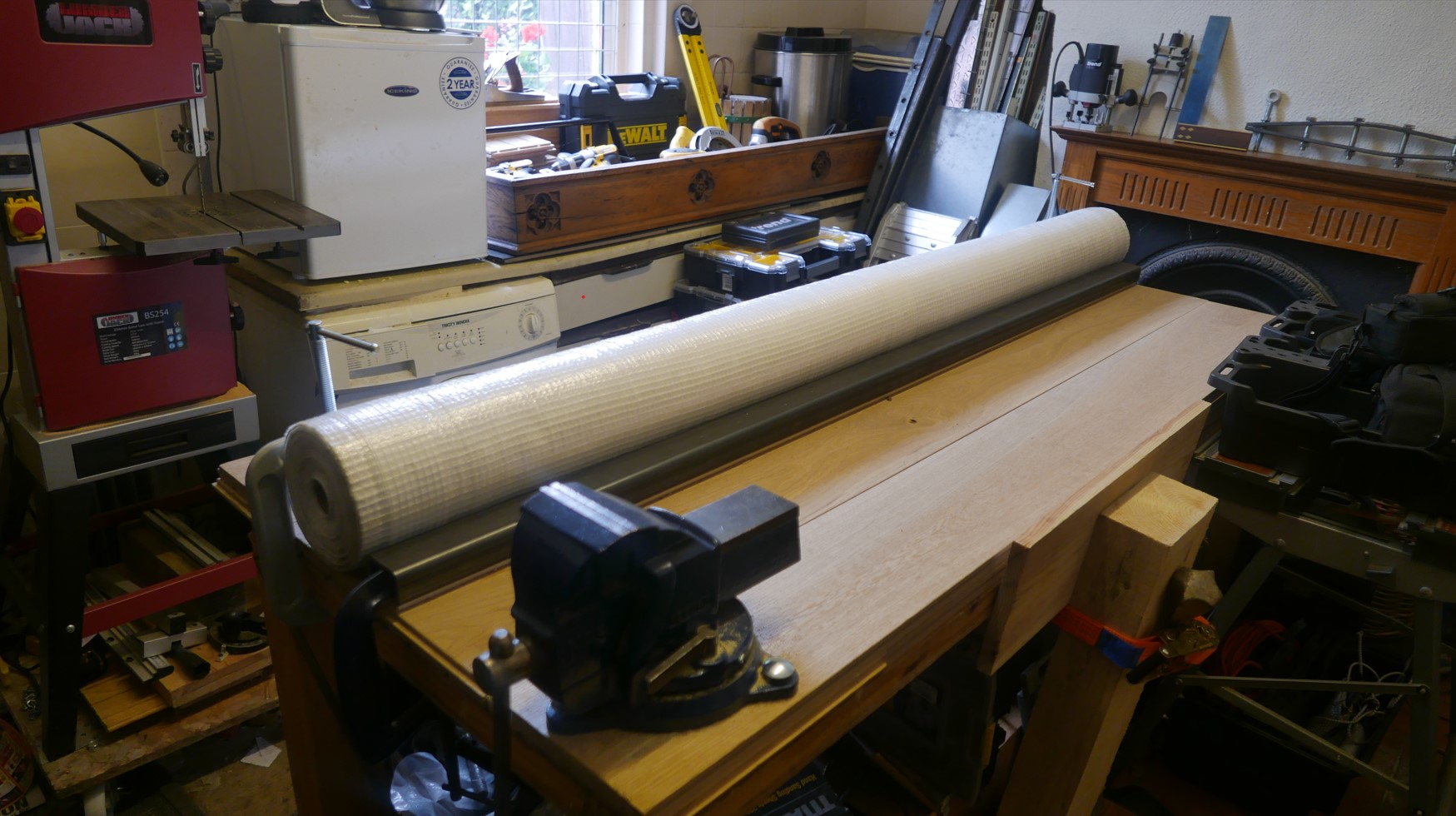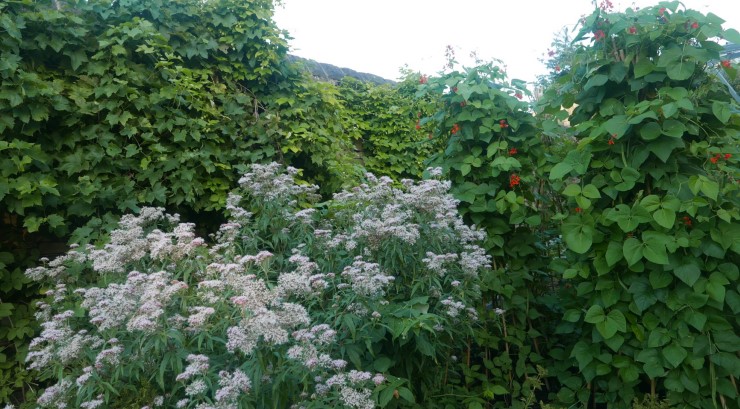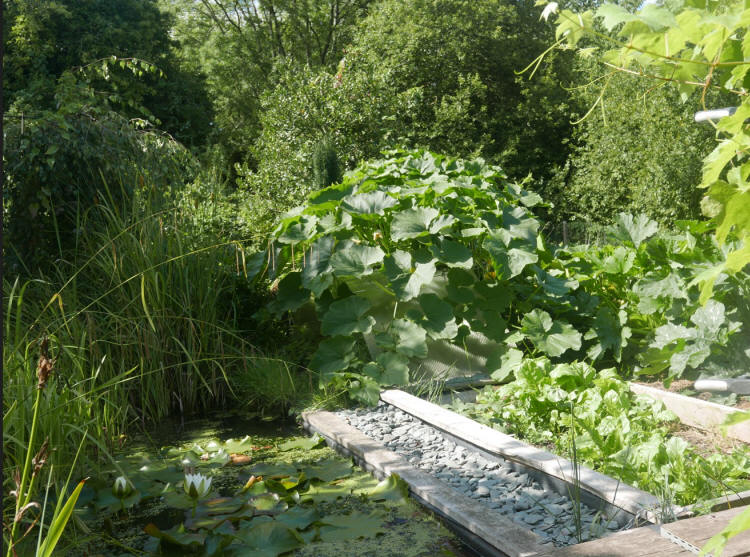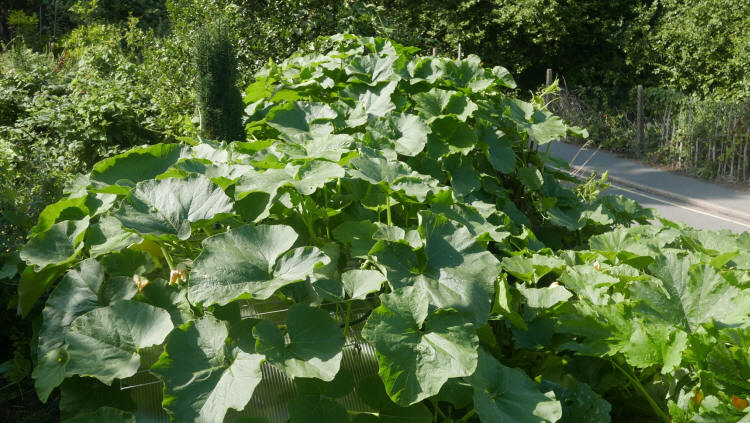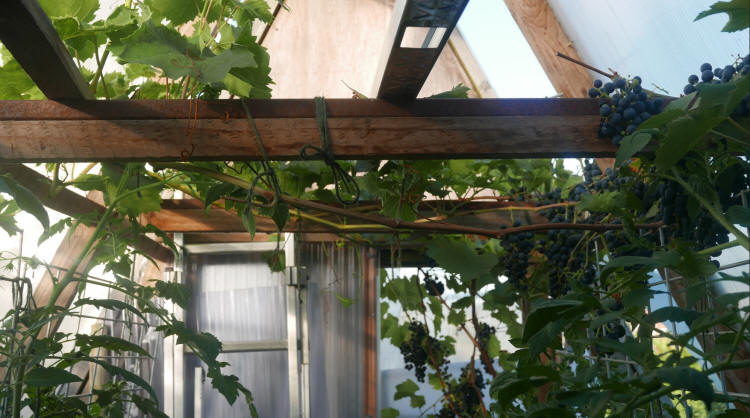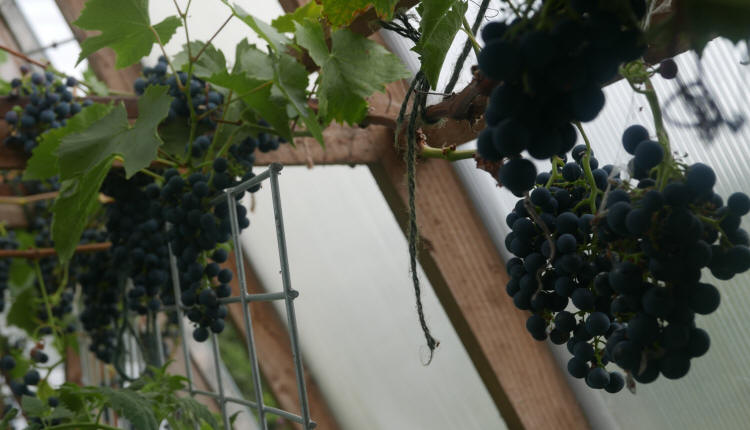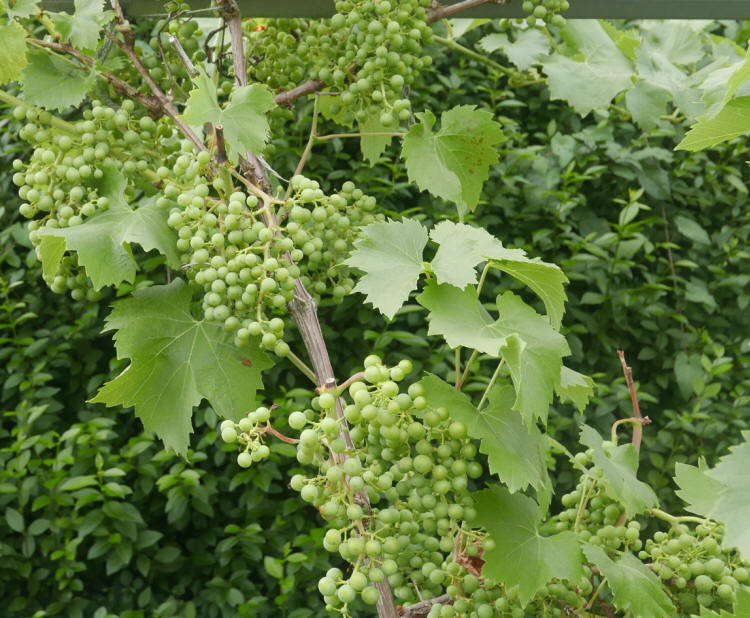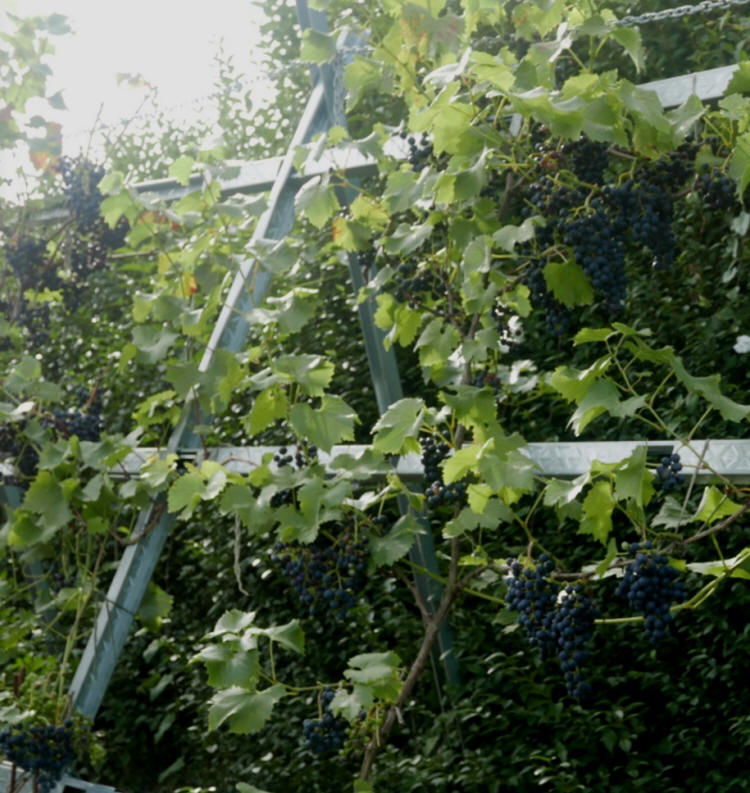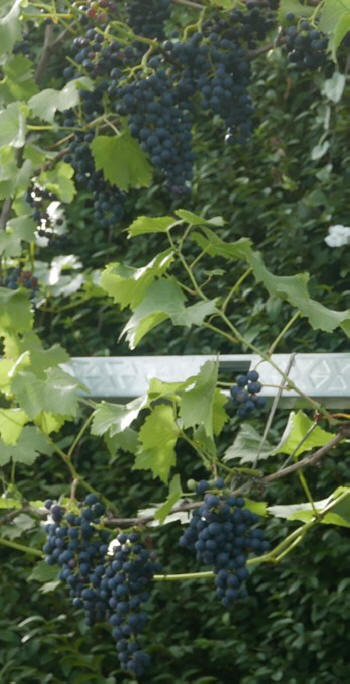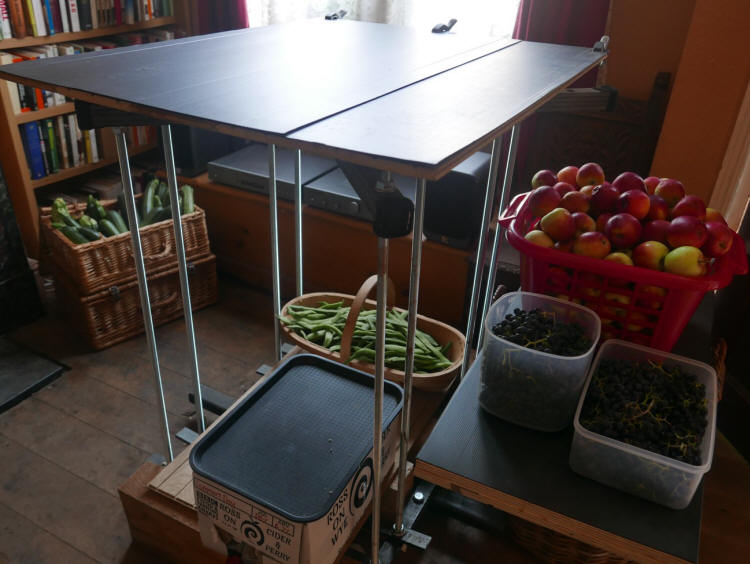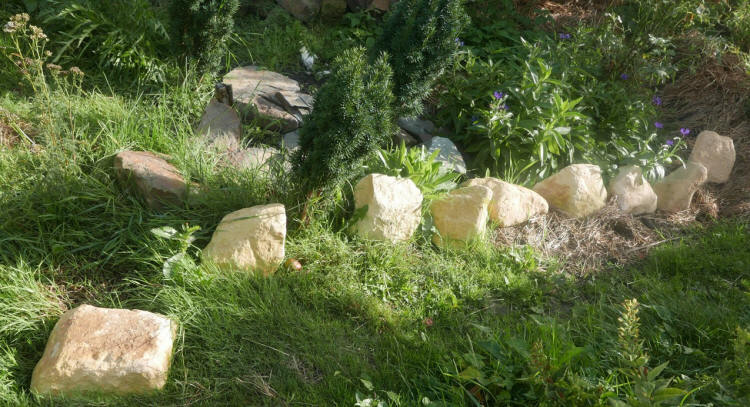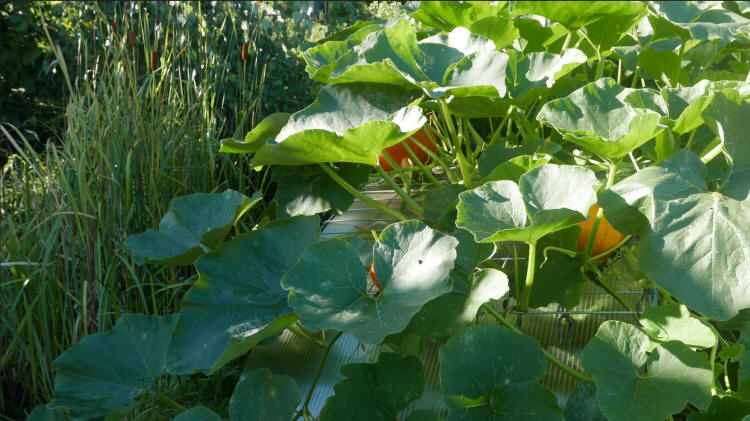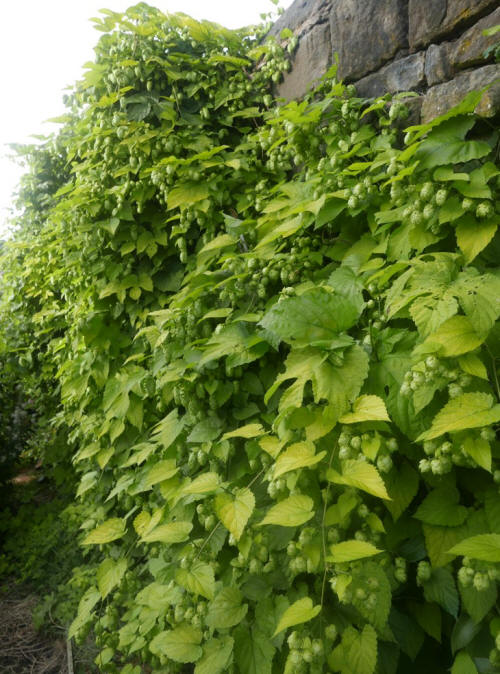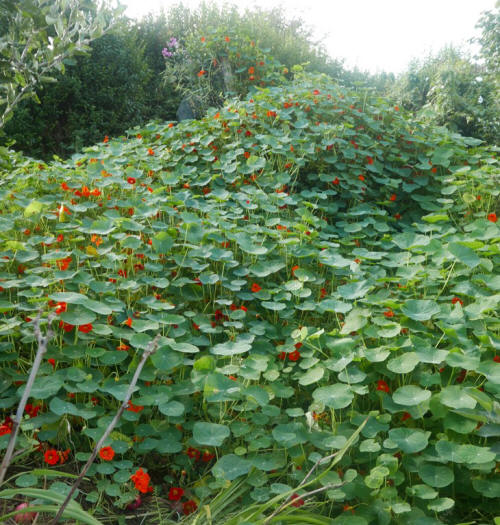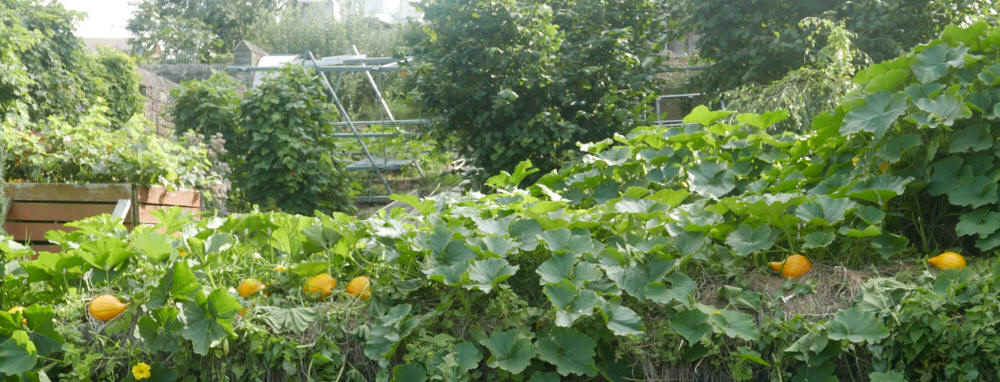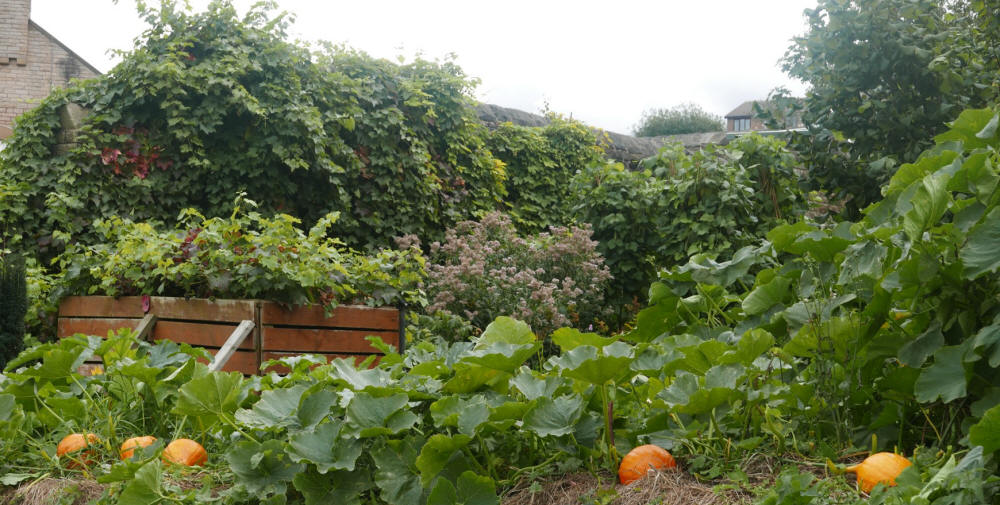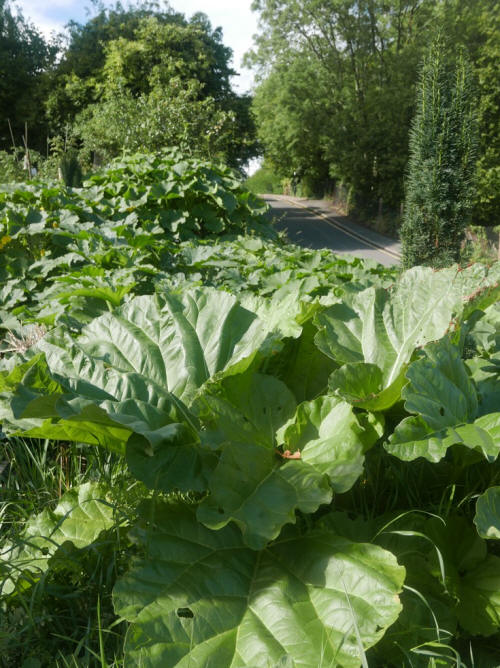
Introduction
My page PHD: Paul Hurt Design More and less recent projects in gardening and construction includes projects I've carried out in 2022 and this page includes more of them. The projects were carried out before the remarkable heat wave - I found the temperature reached 40 celsius near the allotments - but the work I'd already carried out allowed me to cope with the weather conditions quite easily.
In recent years, I've installed a range of water-collecting surfaces, some of them diverting water to storage containers and others directly to growing areas. After the heat wave, there was a succession of dull days with plenty of rainfall at times. The surfaces captured some of this water.
The greenhouse I designed and constructed is very, very flexible. Obviously, it raises the internal temperature so that plants grow better in cold and cool conditions, the function of a greenhouse but in a heatwave, I can remove one or more of the 6 large panels (length 3 metres) which are part of the main structure - all the panels, if necessary - so that the temperature inside the greenhouse isn't higher than the temperature outside. Rather than doors, my greenhouse has large openings which are closed with polycarbonate panels. Again, these panels can easily be removed. Traditional greenhouses have openings to allow ventilation and the gardener can install shading, but these are inadequate. When the outside temperature is much, much lower than 40 Celsius, the temperature in a traditional greenhouse can easily reach 30 Celsius and beyond, particularly if the greenhouse is small - the smaller air mass quickly reaches excessive temperatures. At these temperatures, growth of the plants slows and stops and the plants may be damaged. When plants flourish better outside a greenhouse than inside a greenhouse, then the question has to be asked, what can be done about it? I'm sure that the design I've produced is the best way to deal with the problem, without recourse to the existing system of retractable roofs - a system which is far less easy to implement than this system.
My system, like the retractable roof system, has advantages for water conservation as well as advantages for reducing or eliminating overheating inside the greenhouse. Once the panels are removed, any rain which does fall will water the plants, without using a hosepipe or watering can. I use the greenhouse mainly for growing tomatoes. Before planting tomatoes, the compost in the growing beds can be exposed to rainwater, making unnecessary the use of mains water.
In my greenhouse, there's also a grapevine (variety 'Regent,' a red grape variety with dual use, producing dessert and wine-making grapes). The greenhouse has an extension with the radical roof I designed. The most important advantage of this roof, a dramatic advantage, I think, is its ease of construction, but another is the fact that it makes implementation of a 'green roof' very easy. Green roofs which require the transport of soil, perhaps tons of soil, from ground level to the roof, with plantings of uninspiring plants, very often, aren't for me. The roof of this greenhouse is covered with the top growth of these grape vines, which are now producing a very good yield of grapes, despite the fact that the vine receives only minimal pruning, and with the growth of hop plants. The variety is 'Target,' used in commercial beer growing. In March, when the allotment produces a very restricted range of crops, the hop shoots of this variety can be harvested and used in cooking. The golden hop plant which I grow against a wall in the lower allotment offers more aesthetic appeal, but without the advantage of edible hop shoots.
When it rains every day or almost every day, then water conservation shouldn't be ignored. This is the time to collect water and to store it. The situation can change dramatically, a surplus can easily become a shortage - or, of course, a surplus can become a devastating surplus, as in the case of catastrophic floods. There are a number of South Yorkshire reservoirs not far from my allotments. The varying water levels are immediately obvious. The image below shows the effect of a previous drought, not extreme drought, on a reservoir a little further away, across the Derbyshire border, Ladybower reservoir.
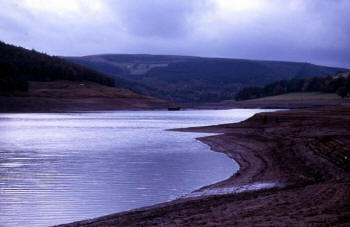
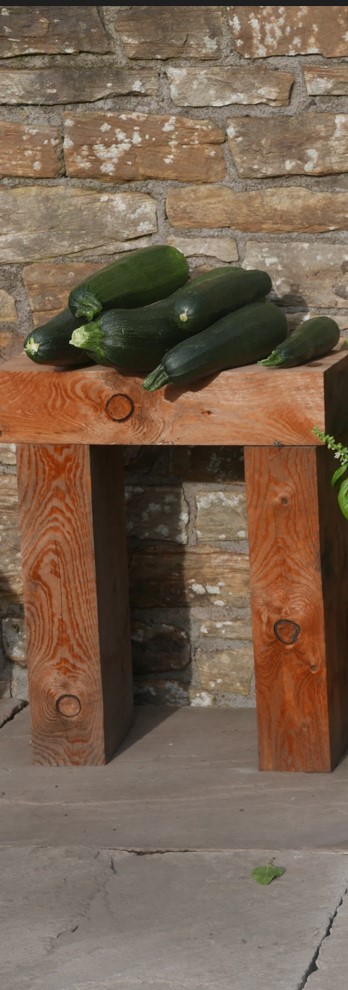
Above, apart from the courgette on the right, these courgettes have been harvested when they are larger than the optimum. Courgettes left to their own devices for longer begin to turn into marrows and sometimes, a well camouflaged marrow will have grown to enormous size. By that time, it won't be a success when cooked but it does have another use. I've got a number of galvanized water troughs for storing water. Peple without water storage containers, or not enough storage containers, can consider the advantages of treating large marrows, larger courgettes, squash plants and pumpkin plants as portable storage containers. They are 95% water. People with storage containers can consider the advantage of taking these fruits to an area which needs watering and simply leaving it on the soil surface. I very often have plenty of straw and can cover them with straw. Obviously, this is only useful for long term watering, not for plants which need immediate water to keep them going or resuscitate them. Slicing the marrows or courgettes with a spade will speed up the process of water release.
